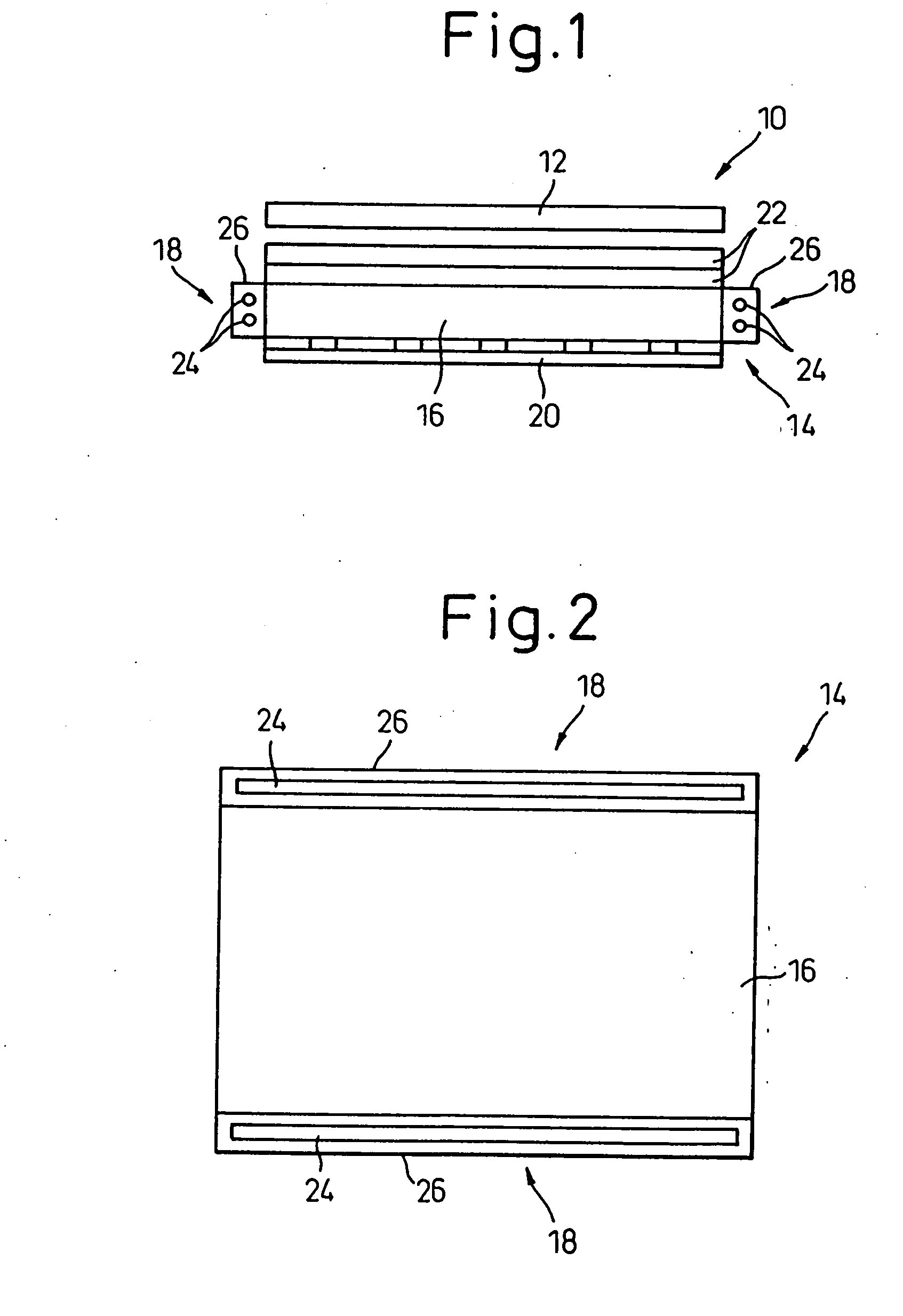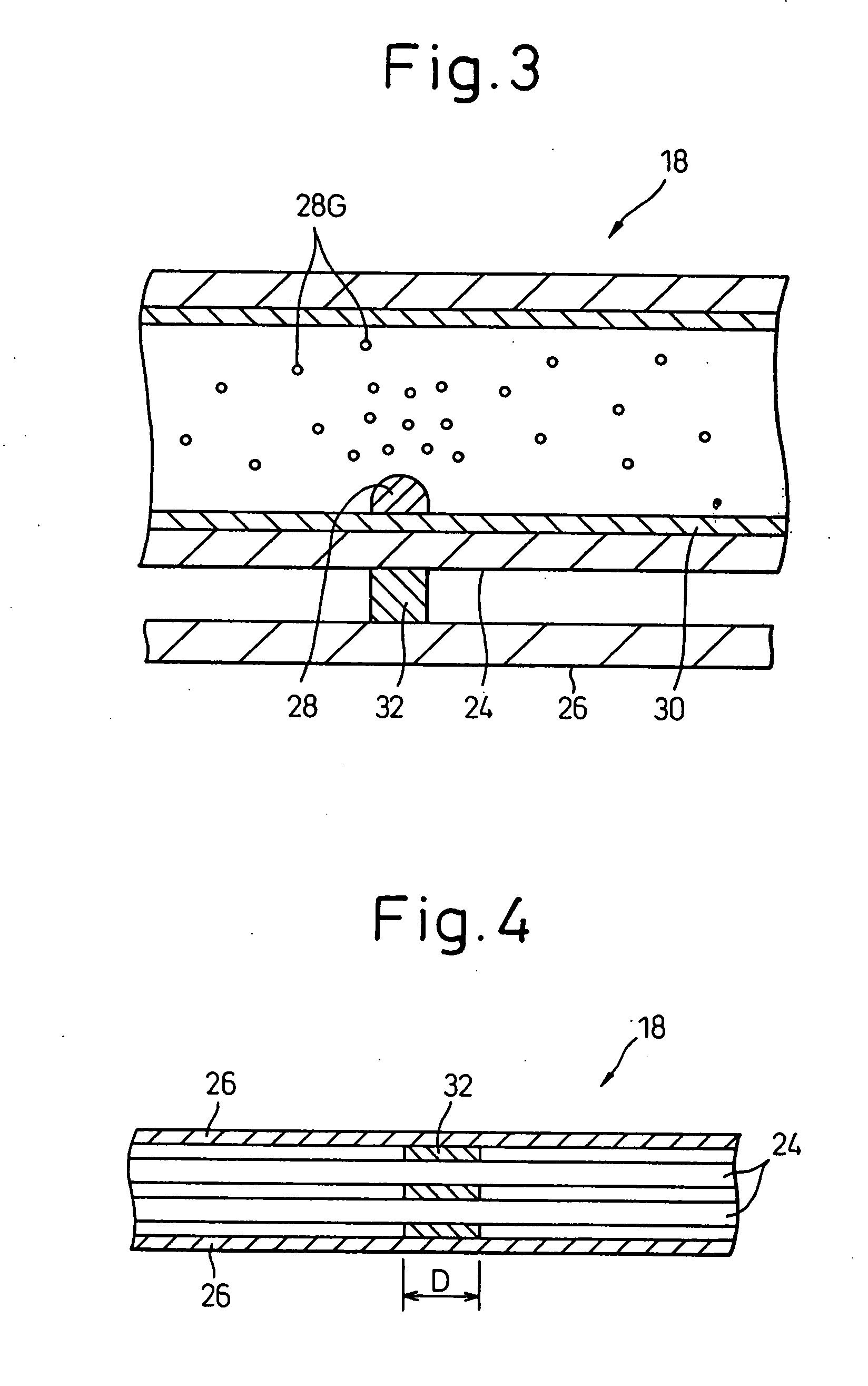Backlight having discharge tube, reflector and heat conduction member contacting discharge tube
a technology of discharge tube and reflector, which is applied in the direction of discharge tube main electrode, lighting and heating apparatus, instruments, etc., can solve the problems of large cooling metal device not being fitted to the discharge tube, difficult to apply technology, and increasing the brightness of the backligh
- Summary
- Abstract
- Description
- Claims
- Application Information
AI Technical Summary
Benefits of technology
Problems solved by technology
Method used
Image
Examples
second embodiment
[0282]FIG. 42 is a sectional view showing the light source device of the present invention. FIG. 43 is a sectional view of the light source device shown in FIG. 42. FIG. 44 is a circuit diagram showing a fan controlling circuit in FIGS. 42 and 43. FIG. 45 explains the operation of the light source device shown in FIGS. 42 and 43. The light source device 18 in this embodiment includes a plurality of discharge tubes 24 and a reflector 26 covering all these discharge tubes 24. A fan 64 and a duct 66 are disposed to cool the discharge tubes 24. A hole 26a having a diameter of 0.5 mm is formed at the center of the bottom of the reflector 26.
[0283] Cooling air flows from the axial-flow fan (40 mm in diameter) 64 fitted below the reflector 26 through the duct 66 and the hole 26a of the reflector 26 and is blown to the opposing portions of the two discharge tubes 24. As a result, one point of the mutually opposing sides of the two discharge tubes 24 becomes the most cooled portion as to the...
third embodiment
[0285]FIG. 46 shows the backlight of the liquid crystal display device according to the present invention. Referring to FIG. 46, the backlight 70 of the liquid crystal display device includes a light guide plate 72, light source devices 74 disposed on either side of the light guide plate 72, an interference type mirror 76 disposed below the light guide plate 72 and a linear polarization separating element 78 disposed above the light guide plate 16. Each light source device 74 comprises discharge tubes and a reflector as described above. A conventional scattering layer is coated onto the acrylic light guide plate 72 by screen-printing.
[0286] The polarization separating element 78 comprises a cholesteric liquid crystal polymer film and broad-band 4 / 1 wavelength plates bonded to both surfaces of the cholesteric liquid crystal polymer film. The interference type mirror 76 has a multi-layered structure fabricated by laminating a plurality of transparent film layers having a light absorpt...
fourth embodiment
[0308]FIG. 57 shows the light source device 18 of the backlight according to the present invention. The light source device 18 includes a discharge tube 24 containing mercury 28, a reflector 26 and a heat conduction member 32 interposed between the discharge tube 24 and the reflector 26. The discharge tube has electrodes 25. A fluorescent material 30 is coated to the inner surface of a glass tube constituting the discharge tube 24. The heat conduction member 32 is a cooling device defining a first position of the discharge tube 24 as a most cooled portion (the position of the discharge tube 24 at which the heat conduction member 32 is disposed is called the first position). The backlight is arranged such that liquid mercury 28 is collected at the first position in the discharge tube 24, and the discharge tube 24 emits the light with the highest brightness based on the temperature of the first position. In this embodiment, liquid mercury 28 is gathered at the first position in the di...
PUM
| Property | Measurement | Unit |
|---|---|---|
| size | aaaaa | aaaaa |
| diameter | aaaaa | aaaaa |
| temperature | aaaaa | aaaaa |
Abstract
Description
Claims
Application Information
 Login to View More
Login to View More - R&D
- Intellectual Property
- Life Sciences
- Materials
- Tech Scout
- Unparalleled Data Quality
- Higher Quality Content
- 60% Fewer Hallucinations
Browse by: Latest US Patents, China's latest patents, Technical Efficacy Thesaurus, Application Domain, Technology Topic, Popular Technical Reports.
© 2025 PatSnap. All rights reserved.Legal|Privacy policy|Modern Slavery Act Transparency Statement|Sitemap|About US| Contact US: help@patsnap.com



